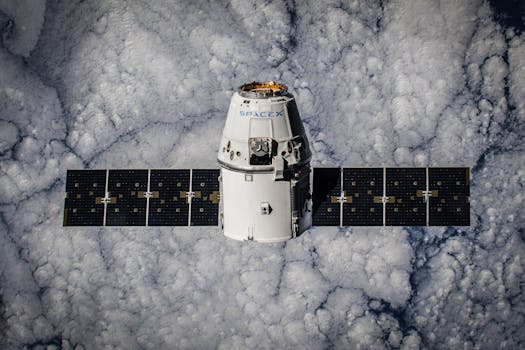The Future of Satellite Technology: Trends and Innovations in The Satellite Industry

The Future of Satellite Technology: Trends and Innovations in The Satellite Industry
The future of satellite technology is rapidly evolving with new trends and innovations emerging in the satellite industry, enabling faster and more reliable communication, navigation, and remote sensing capabilities. The satellite industry has witnessed significant growth over the years, driven by advancements in technology, increasing demand for satellite-based services, and the expanding role of satellites in various sectors such as telecommunications, navigation, weather forecasting, and Earth observation.
Satellite technology has become an essential part of modern life, with satellites playing a vital role in facilitating global communication, navigation, and remote sensing. The future of satellite technology holds much promise, with ongoing research and development aimed at improving the efficiency, capacity, and sustainability of satellite systems. In this article, we will explore the current trends and innovations in the satellite industry and their potential impact on the future of satellite technology.
Advancements in Satellite Technology
Recent advancements in satellite technology have led to the development of more efficient, compact, and powerful satellites. One of the key trends in the satellite industry is the increasing use of small satellites, also known as smallsats or cubesats. These satellites are smaller, lighter, and less expensive than traditional satellites, making them an attractive option for a wide range of applications, including Earth observation, communication, and navigation. Small satellites have also enabled the development of satellite constellular networks, which provide global coverage and can offer a range of services, including broadband internet, navigation, and remote sensing.
Another significant trend in the satellite industry is the use of advanced materials and manufacturing techniques, such as 3D printing, to produce satellites. This has enabled the creation of complex satellite structures and components, which can improve the performance and efficiency of satellites. Additionally, the use of electric propulsion systems, such as ion engines, has become more prevalent, allowing satellites to extend their mission duration and improve their maneuverability.
Emerging Trends and Innovations
The satellite industry is witnessing a range of emerging trends and innovations, which are set to shape the future of satellite technology. One of the most significant trends is the increasing use of artificial intelligence (AI) and machine learning (ML) in satellite systems. AI and ML can be used to improve the performance and efficiency of satellites, as well as to enhance the accuracy and speed of data processing and analysis. For example, AI-powered satellite systems can automatically detect and respond to anomalies, such as changes in weather patterns or natural disasters.
Another emerging trend is the use of quantum technology in satellite systems. Quantum technology has the potential to revolutionize the field of satellite communication, enabling the creation of ultra-secure and high-speed communication networks. Quantum key distribution (QKD) is a method of secure communication that uses quantum mechanics to encode and decode messages, making it virtually un-hackable. This technology has the potential to transform the way we communicate and could have significant implications for the future of satellite technology.
Conclusion
In conclusion, the future of satellite technology is rapidly evolving, with new trends and innovations emerging in the satellite industry. The use of small satellites, advanced materials and manufacturing techniques, electric propulsion systems, AI, and quantum technology are just a few examples of the many advancements being made in the field. As the demand for satellite-based services continues to grow, it is likely that we will see significant investment and innovation in the satellite industry, driving the development of new technologies and applications. The future of satellite technology holds much promise, and it will be exciting to see how these trends and innovations shape the industry in the years to come.